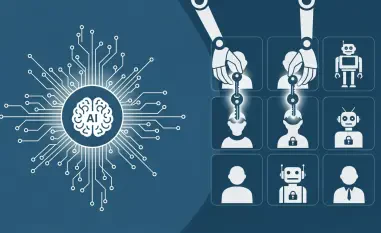Setting the Stage for Cybersecurity Evolution
Imagine a small e-commerce business facing a barrage of sophisticated cyberattacks overnight, with no dedicated team to respond, risking customer data and trust in mere hours. This scenario is no longer a rare occurrence but a daily reality for countless organizations, regardless of size, as cyber threats have become indiscriminate and relentless. The rise of Security Operations Centers (SOCs) as a cornerstone of defense has been pivotal, yet their traditional inaccessibility due to high costs has left many vulnerable. Enter artificial intelligence (AI), a transformative force reshaping how SOCs operate, promising to bridge this gap. This review delves into how AI-driven security operations are revolutionizing cybersecurity, making robust protection a feasible reality for businesses across the spectrum.
Evolution of Security Operations Centers with AI
Security Operations Centers have long served as the nerve center for enterprise cybersecurity, managing real-time threat detection, investigation, and response. Historically, the immense resources required—both in terms of skilled personnel and advanced tools—restricted SOCs to large corporations with substantial budgets. The financial burden, often exceeding a million dollars annually for staffing alone, rendered them unattainable for smaller entities, exposing a critical security disparity.
The integration of AI into SOC frameworks marks a seismic shift, automating labor-intensive tasks and slashing operational costs. By handling repetitive functions like alert triage, AI allows even mid-sized and small businesses to access enterprise-grade security without the traditional overhead. This democratization is crucial in today’s threat landscape, where no organization is immune to attacks, pushing AI-driven SOCs to the forefront of modern cybersecurity strategies.
Key Features of AI-Driven SOC Platforms
Streamlined Alert Triage and Response Automation
One of the standout capabilities of AI in SOC platforms is its ability to automate the processing of thousands of alerts daily. By filtering out false positives and grouping related signals, AI ensures that only high-priority threats are escalated for human review. This efficiency not only lightens the workload on analysts but also accelerates response times to critical incidents.
Beyond workload reduction, automation enables continuous 24/7 monitoring with minimal staffing needs. Organizations can maintain vigilance around the clock without the expense of large teams, fundamentally altering how SOCs function. This capability ensures that even businesses with limited resources can sustain robust security postures without interruption.
Enhanced Threat Analysis Through Contextual Intelligence
AI’s strength in replicating human judgment through advanced algorithms, such as large language models, sets it apart in threat analysis. By providing contextual insights and enriching alerts with detailed evidence, AI empowers analysts to focus on strategic decision-making rather than sifting through endless logs. This shift significantly enhances the precision of threat detection.
The real-world impact of this feature is evident in reduced alert fatigue among SOC teams. With AI handling initial investigations, analysts are spared from repetitive tasks, allowing them to address complex threats with greater focus. Such improvements elevate the overall effectiveness of security operations, ensuring threats are identified and mitigated with higher accuracy.
Cutting-Edge Developments in AI for Security Operations
Recent strides in AI technologies, particularly in machine learning algorithms, have further refined SOC capabilities, enabling more predictive and adaptive responses to emerging threats. Virtual SOC architectures, powered by AI, are gaining traction, acting as an initial layer of defense that minimizes the need for extensive human intervention. These innovations are redefining operational efficiency in cybersecurity.
Market trends underscore the rapid embrace of these solutions, with a significant percentage of organizations—nearly 88%—planning to explore AI-driven SOCs within the next year from 2025. This shift reflects a broader industry move away from outdated outsourcing models toward scalable, technology-driven platforms. The momentum indicates a fundamental change in how security operations are perceived and implemented.
Practical Implementations Across Industries
AI-driven SOCs are finding applications across a diverse array of sectors, from healthcare to e-commerce, proving their versatility. Small and medium-sized businesses, previously unable to afford dedicated security teams, now leverage these platforms to achieve protection levels once reserved for industry giants. This accessibility is transforming risk management on a global scale.
Specific cases, such as regional banks adopting AI to secure sensitive financial data, highlight the technology’s adaptability to unique needs. Similarly, startups have utilized these tools to establish strong security foundations from inception. Large enterprises, too, benefit by integrating AI to streamline existing SOCs, cutting through operational noise and boosting efficiency in threat handling.
Obstacles and Constraints in Adoption
Despite the promise of AI-driven SOCs, challenges persist in their implementation, notably the need for ongoing system adjustments to counter evolving cyber threats. Without regular updates, AI models risk becoming outdated, potentially missing novel attack patterns. This technical demand requires dedicated effort to maintain effectiveness over time.
Adoption barriers also include initial setup costs and the complexity of integrating AI with legacy security tools. Human oversight remains essential to validate AI outputs, adding a layer of operational necessity that cannot be overlooked. These hurdles, while significant, are being addressed through continuous development to ensure reliability in dynamic environments.
Vision for AI in Cybersecurity’s Future
Looking ahead, AI-driven SOCs are poised for even greater advancements, with potential breakthroughs in full automation and predictive threat modeling on the horizon. Such innovations could preempt attacks before they materialize, shifting cybersecurity from reactive to proactive. This trajectory promises to redefine defense mechanisms fundamentally.
Industry projections suggest that by 2028, AI will manage a substantial portion of SOC tasks, further reducing human dependency. This evolution is expected to solidify AI as a cornerstone of security, enhancing global business resilience. The ongoing democratization of these tools will likely set new benchmarks for industry standards, ensuring broader access to cutting-edge protection.
Reflecting on AI’s Transformative Role
Looking back, this exploration of AI-driven security operations revealed a technology that has fundamentally altered the accessibility and scalability of SOCs across various business sizes. Its ability to automate critical functions and provide contextual threat insights stood out as a game-changer in the cybersecurity realm. The impact was clear: robust protection is no longer a privilege of the few but a practical option for many.
As organizations move forward, the actionable step lies in evaluating AI-driven SOC platforms tailored to specific needs, ensuring integration with existing systems for seamless operation. Consideration of long-term strategies, such as investing in adaptable AI models, will be vital to stay ahead of evolving threats. Embracing this technology now positions businesses to build resilient defenses, safeguarding their future in an increasingly complex digital landscape.













